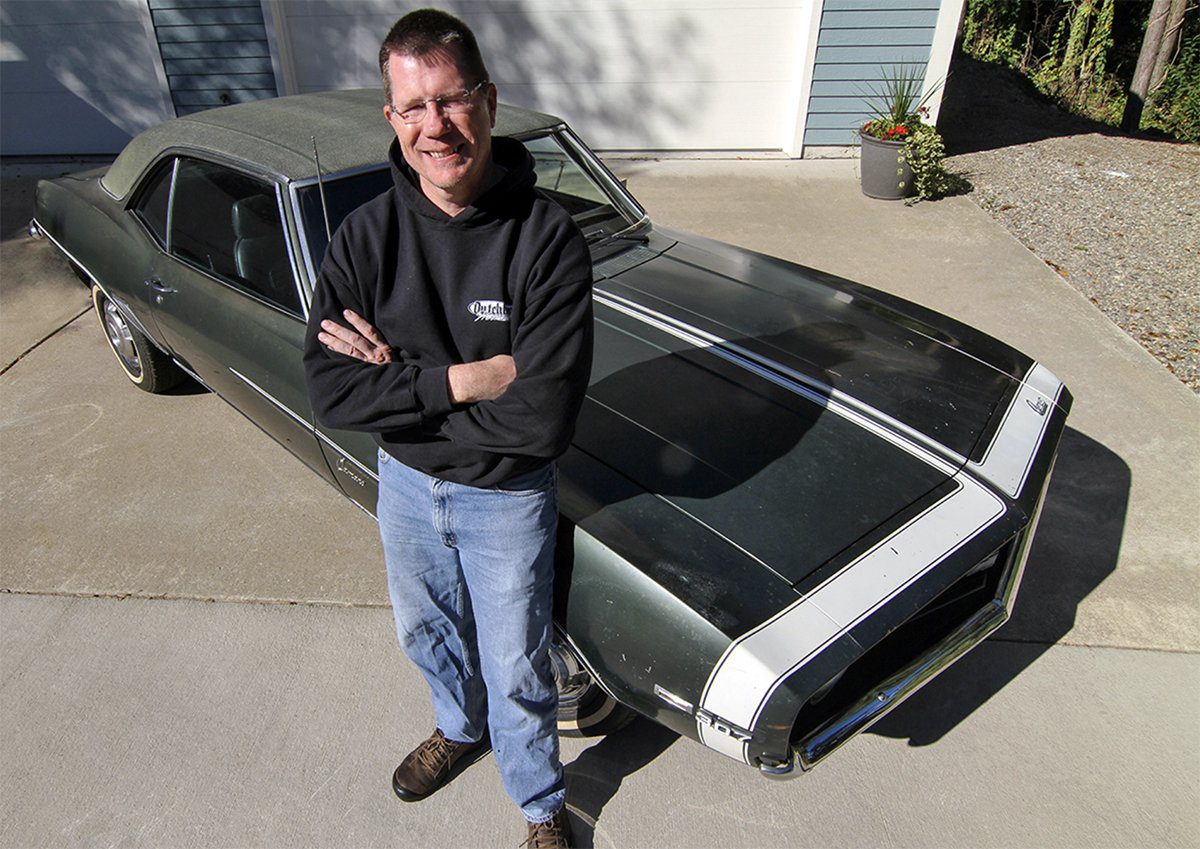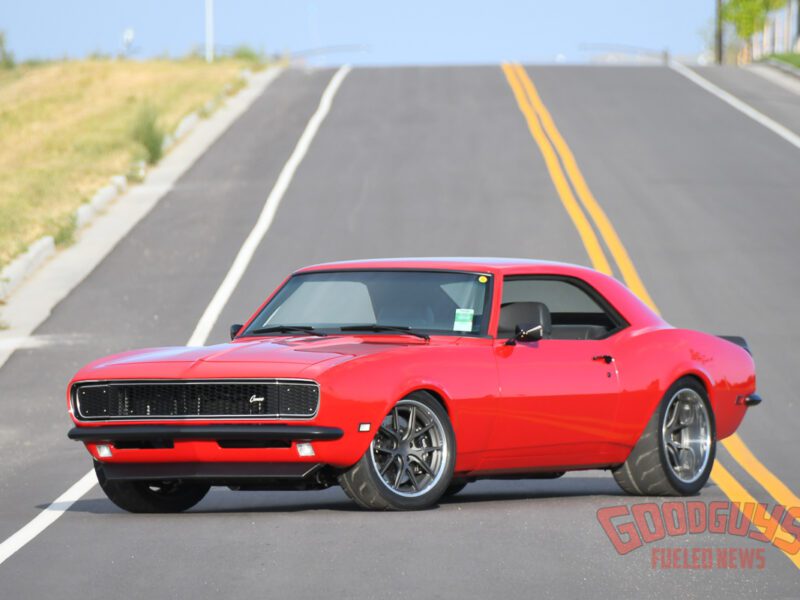Retro Rumblings – Twister 2000
When a movement begins, be it in sports, politics, music, community, or otherwise, a lot of moving parts have to come together to create synergistic momentum.
Hot rodding has seen its share of major movements. Postwar dry lakes racing was hot rodding’s first signature movement. Young Americans just home from WWII, armed with ambition and mechanical skills acquired while building and engineering war machines, turned their focus from fighting enemies to going fast. Out of this movement a mighty American industry sprang up seemingly overnight. Enthusiasts, manufacturers, and publishers laid the bedrock for an industry that still burns high octane fuel. Lucky for us, right?
While the lion’s share of us weren’t around for the postwar party, plenty of us have seen uprisings and trends in the decades that followed. It’s well known hot rodding’s biggest trend the last two decades is pro touring. A lot of us at Goodguys had a front row seat for its emergence.
Mark Stielow is the man properly credited with starting the pro-touring movement. A GM engineer and hot rodder at heart, Stielow built a white ’69 Camaro in the early-’90s not to start a movement but to simply survive the event known as One Lap of America. One Lap had a series of events inside the event. Participants ran road courses, drag strips, autocross, and braking contests, and then drove to different racetracks throughout the country between contests. Stielow’s choice of vehicle was Chevy’s flagship first-gen muscle car. His friend and fellow GM alum Kyle Tucker helped Stielow with the build and served as co-pilot in that 1993 One Lap event.

Photo courtesy of Hemmings
To beat modern cars and European challengers, the car had to be fast, handle properly, and stop on a dime. Stielow put 17-inch wheels on the Camaro (unheard of at the time for a muscle car), a big brake kit, and a stout injected Chevy small block. While he and Tucker came up short in ’93, Stielow returned for class wins in 1994 and 1995. You could say heads were turned.

At that time in the mid-’90s, you simply didn’t see anything resembling a pro-touring car. We never did at our events, that’s for sure. Every extreme muscle car was all about brute power and straight-line speed. But the seeds had been planted and insiders like Popular Hot Rodding Editor Cameron Evans had intimate knowledge of the burgeoning scene through his close ties with Stielow. Cameron was a very close friend of Goodguys and had been talking up this new breed of street machine. It piqued our interest.
Then, in 2000, the game changed for good. There was terminology confusion when discussing these new super muscle cars. We called them street machines, Stielow called them pro-touring cars (a response to the pro street genre), while some called them g-machines – the “g” signifying g-forces, like those experienced in fast cornering.

Gathering of Mark Stielow Camaro’s at the Goodguys 2015 Heartland Nationals. Photo courtesy Lateral-G
With Evans joining our selection committee in Columbus, the competition for Goodguys Street Machine of the Year commenced that summer at the Ohio Expo Center. Previously chosen out west, the Street Machine of the Year was now on a national stage in the center of America. Stielow’s One Lap co-pilot Kyle Tucker had been developing chassis components for a ’69 Camaro he and his wife at the time, Stacey, were building in the late-’90s. Their yellow Camaro named “Twister” was finished early in 2000 and immediately set out that spring on the Hot Rod Power Tour. It was a hit and clicked off 2,000 effortless miles but still flew under the radar. Goodguys Columbus was the next stop.
During the Goodguys Nationals it was so bizarre seeing the Tuckers’ bright yellow Camaro sitting low on 18-inch wheels amongst a sea of muscle-bound brutes with Mickey Thompson meats, parachutes, and wild paint. Kyle and Stacey did their homework with Twister. It was built on nights and weekends with whatever spare cash they could muster.

“While we were building the car, if we couldn’t find an aftermarket part you could buy, we simply built our own and didn’t think much of it,” Kyle said. “We built suspension parts, tubular lower and upper control arms, subframe connectors and more.”
Twister could go around corners like a Bimmer and like Stielow’s white ’69 it featured a 500hp small block, bucket seats, and a six-speed transmission.
When our staff sat down to select the Street Machine of the Year, it became evident Twister had all of the prerequisites needed to be crowned Street Machine of the Year. Superior build quality, ample power, precise handling, and a perfect stance.  During the awards ceremony, we interviewed Cam Evans on stage and he informed the crowd of 3,000 onlookers they were seeing the next wave of new millennium muscle. He couldn’t have been more correct.
During the awards ceremony, we interviewed Cam Evans on stage and he informed the crowd of 3,000 onlookers they were seeing the next wave of new millennium muscle. He couldn’t have been more correct.
In subsequent years, we saw the emergence of the Ringbrothers, Jeremy and Phil Gerber of Roadster Shop, Pure Vision, and other young, extremely talented fabricators shaping the look of the pro touring future. Careers were made and manufacturing companies found success in Columbus by winning Goodguys’ Street Machine of the Year on the nation’s biggest stage.
A year after its win in Columbus, Twister was sold to start Detroit Speed. We all know how that turned out. The car is currently owned by Eddie Vannoy. Mark Stielow and Kyle Tucker were the pro-touring pioneers. It’s important we never forget that.




